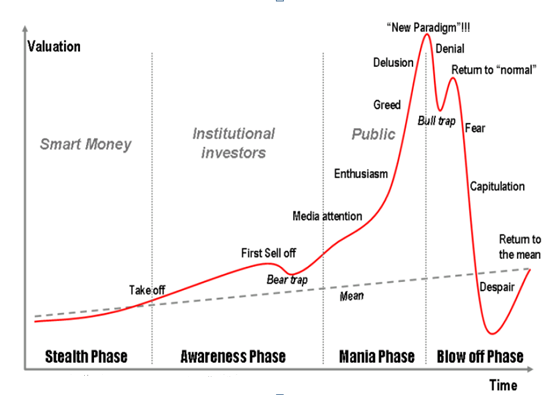
Bubbles are an important cause of economic recessions according to the popular way of thinking. The main question posed by experts is how one knows when a bubble is forming. It is held that if the central bankers knew the answer to this question they might be able to prevent bubble formations and thus prevent recessions.
On this, at the World Economic Forum in Davos Switzerland on January 27, 2010, Nobel Laureate in Economics Robert Shiller argued that bubbles could be diagnosed using the same methodology psychologists use to diagnose mental illness. Shiller is of the view that a bubble is a form of psychological malfunction. Hence the solution could be to prepare a checklist similar to what psychologists do to determine if someone is suffering from, say, depression. The key identifying points of a typical bubble according to Shiller, are,
- Sharp increase in the price of an asset.
- Great public excitement about these price increases.
- An accompanying media frenzy.
- Stories of people earning a lot of money, causing envy among people who aren’t.
- Growing interest in the asset class among the general public.
- New era “theories” to justify unprecedented price increases.
- A decline in lending standards.

What Shiller outlines here are various factors that he holds are observed during the formation of bubbles. To describe a thing is, however, not always sufficient to understand the key factors that caused its emergence. In order to understand the causes one needs to establish a proper definition of the object in question. The purpose of a definition is to present the essence, the distinguishing characteristic of the object we are trying to identify. A definition is meant to tell us what the fundamentals or the origins of a particular entity are. On this, the seven points outlined by Shiller tell us nothing about the origins of a typical bubble. They tell us nothing as to why bubbles are bad for economic growth. All that these points do is to provide a possible description of a bubble. To describe an event, however, is not the same thing as to explain it. Without an understanding of the causes of an event it is not possible to counter its emergence.
Defining bubbles
…read more HERE













